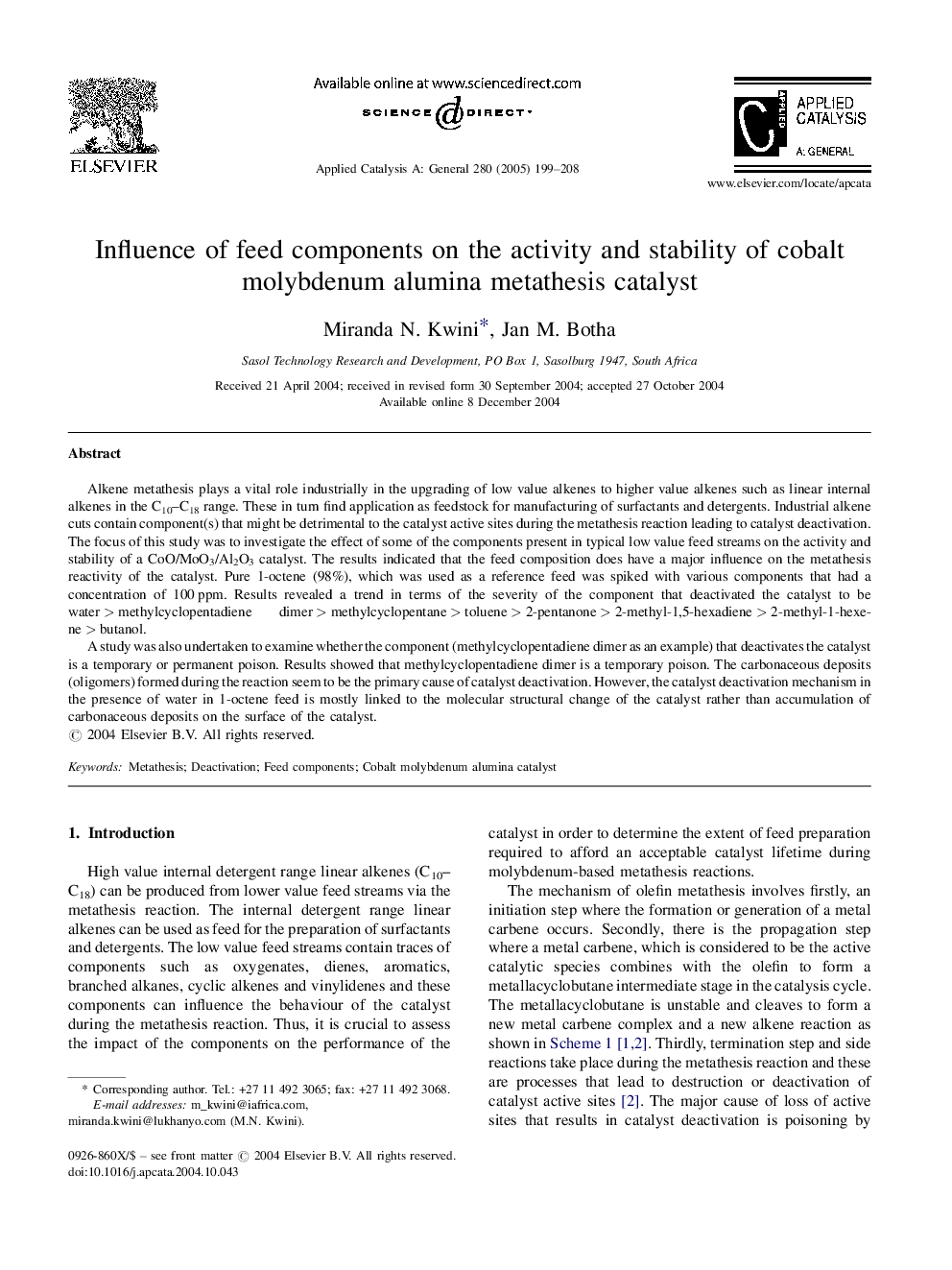| Article ID | Journal | Published Year | Pages | File Type |
|---|---|---|---|---|
| 9608120 | Applied Catalysis A: General | 2005 | 10 Pages |
Abstract
A study was also undertaken to examine whether the component (methylcyclopentadiene dimer as an example) that deactivates the catalyst is a temporary or permanent poison. Results showed that methylcyclopentadiene dimer is a temporary poison. The carbonaceous deposits (oligomers) formed during the reaction seem to be the primary cause of catalyst deactivation. However, the catalyst deactivation mechanism in the presence of water in 1-octene feed is mostly linked to the molecular structural change of the catalyst rather than accumulation of carbonaceous deposits on the surface of the catalyst.
Keywords
Related Topics
Physical Sciences and Engineering
Chemical Engineering
Catalysis
Authors
Miranda N. Kwini, Jan M. Botha,
